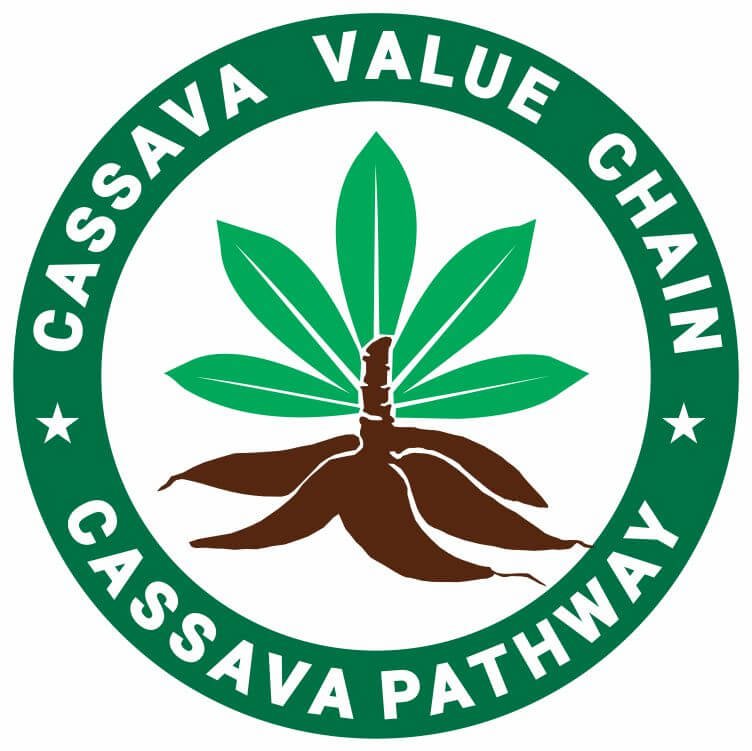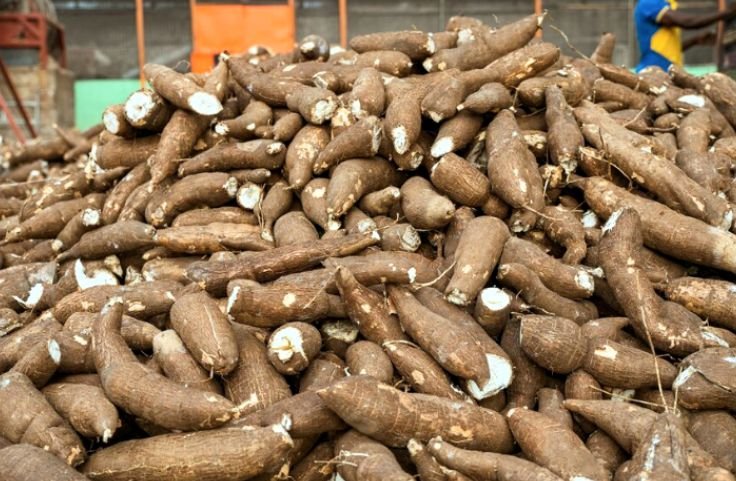Boost your cassava sales with these proven cassava marketing strategies. Discover tips to reach buyers, add value, and grow your business effectively in this comprehensive guide.
If you grow cassava or work with it, you know that producing good roots is only part of the journey.
Getting your cassava to the right buyers and earning a fair price can be a challenge.
The market can be competitive, with many sellers offering similar products.
You need ways to stand out and connect with customers who value what you offer.
From finding the best buyers to packaging your cassava products and choosing the right sales channels, there are practical steps you can take to improve your results.
This guide will walk you through strategies that help you reach more customers, increase your profits, and build a stronger cassava business.
You’ll find tips suited to your needs, whether you sell fresh roots, processed goods, or bulk orders.
If you are new to cassava and everything about it, here is a must-read post for you.
Table of Contents
- Why Should Farmers Be Concerned about Cassava Marketing Strategies
- Understanding the Cassava Market
- Identifying Target Customers and Market Segments
- Product Differentiation and Value Addition
- Pricing Strategies for Cassava Products
- Distribution Channels and Logistics
- Leveraging Technology and Digital Marketing
- Building Relationships and Networks
- Overcoming Challenges in Cassava Marketing
- Frequently Asked Questions
- Conclusion
Why Should Farmers Be Concerned about Cassava Marketing Strategies
For cassava farmers, producing quality roots is only half the battle. Knowing how to market your cassava effectively is important to getting the best price, reaching more buyers, and scaling.
Below are key reasons why mastering cassava marketing strategies matters for every farmer.
Maximizing Profitability
Everyone who is in business wants to make a profit, including cassava farmers.
If you ignore cassava marketing strategies, you will be left behind in sourcing buyers and establishing the needed relationship for future profitability.
Reducing Post-Harvest Losses
Cassava roots are perishable. Strong marketing links to processors and consumers help reduce waste by ensuring your produce is sold quickly and efficiently.
Accessing Wider Markets
Good marketing opens doors beyond local buyers. It enables farmers to reach new customers in urban areas or export markets, expanding sales opportunities.
Building Sustainable Businesses
By understanding marketing strategies, farmers can build reliable customer relationships, reduce reliance on middlemen, and create a stable income stream that supports long-term growth.
Related: Cassava Packaging Guide for Processors
Understanding the Cassava Market
Get to know how the cassava market works across different levels and why understanding these layers helps you make better marketing decisions.
Local Cassava Market: Your Immediate Customer Base
At the local level, cassava is a staple food for many households.
People buy fresh roots and cassava products like flour and starch to meet daily needs.
As a grower or seller, you’ll find that local demand is steady but price-sensitive.
Offering quality and consistent supply can help you build trust.
Getting involved with local processors who turn cassava into value-added products opens more chances to earn a better income and grow your business.
Regional Cassava Market: Trading Beyond Your Borders
Regionally, countries like Nigeria, Brazil, and Thailand trade large volumes of cassava and its products.
If you want to tap into this market, understanding trade rules, pricing trends, and transportation logistics is key.
Export markets look for large quantities and steady quality.
You can benefit by connecting with regional buyers and processors who add value before reaching consumers.
Regional markets can help you scale up and access higher-paying opportunities.
International Cassava Market: Meeting Global Demand
On the international stage, cassava reaches consumers in Europe, America, and Asia in various forms.
Exporters, distributors, and retailers work to meet strict quality standards and regulations.
Growing interest in gluten-free and organic foods means you can market cassava products as healthy alternatives.
Staying informed about global trends and sustainability demands lets you position your products for better prices.
Exporting requires planning but opens doors to new, profitable markets.
Related Posts
How to Start Commercial Cassava Farming
How to Export Cassava from Africa
How to Profit from the Cassava Value Chain
Cassava Flour Production Business: How to Start and Succeed
Is Cassava a Good Cash Crop in the U.S. Market?
Identifying Target Customers and Market Segments
Knowing who buys your cassava products and what they want helps you sell smarter.
Different customers have different needs, so you can tailor your approach to reach them better.
Industrial Buyers: Bulk Needs and Reliability
If you’re targeting industrial buyers, think about companies that need cassava in large amounts for making flour, starch, or other products.
These buyers care most about quality and steady supply.
When you focus on delivering consistent products on time, you build trust that can lead to regular orders.
Building partnerships with these buyers helps create stable sales and grow your business in the long run.
Food Processors: Highlight Product Benefits
Food processors look for ingredients they can use in new and popular products like gluten-free flour or gari.
When reaching out to this group, show how your cassava derivatives fit their needs.
Offer samples or ideas for how they can use your products in recipes or manufacturing.
This hands-on approach helps processors see the value and encourages them to include your cassava in their product lines.
Direct Consumers: Convenience and Health
Direct consumers want food that is easy to use and good for their health. This includes people seeking gluten-free or organic options.
To connect with this group, use social media and ads that explain the benefits of cassava products.
You can also run promotions or cooking demos that show how to use cassava in everyday meals.
Engaging directly like this builds interest and trust, which can boost your sales.
Related: Will the Cassava Packaging Market See the Light of the Day?
Product Differentiation and Value Addition
Turning raw cassava into different products helps you reach more customers and increase your earnings.
Value-added cassava products last longer and meet more needs.
Processing Cassava into Value-Added Products: Reach More Buyers
When you convert cassava into flour, chips, starch, or other forms, you make it easier to store and sell.
These products attract a wider range of buyers, from home cooks to food manufacturers.
By offering different options, you tap into new markets and increase your chances of better profits.
Plus, cassava’s nutritional benefits give you a good selling point for health-conscious customers.
Meeting Quality Standards and Getting Certifications: Build Trust
Keeping your cassava products up to quality standards is important to buyers.
Certifications like ISO, HACCP, or organic labels show that your products are safe and reliable.
Meeting these standards helps you compete in local and global markets.
When customers see trusted certifications, they feel confident buying from you, which can open doors to bigger buyers and retail chains.
Packaging and Branding: Stand Out and Connect
How you package and brand your cassava products makes a big difference.
Clear labels that highlight features like gluten-free, non-GMO, or locally grown catch attention.
Packaging that is easy to use or reseal adds convenience for customers.
Strong branding tells your product’s story and helps build loyalty.
When customers recognize and trust your brand, they keep coming back.
Pricing Strategies for Cassava Products
Understanding how to price your cassava products helps you stay competitive and profitable.
Pricing depends on costs, demand, season, and your target market.
Production Costs: Know Your Expenses
You need to keep track of all costs involved in growing and processing cassava.
This includes seeds, labor, fertilizers, and transportation.
When you find ways to reduce these costs without cutting corners, you can set prices that attract buyers while still earning a good margin.
Efficient production gives you room to offer competitive prices and stay profitable.
Demand and Market Trends: Set Prices That Match Buyer Interest
Customer demand affects how much you can charge for cassava products.
For example, as more people seek gluten-free foods, cassava flour and fufu become more popular.
You can price products to fit either large markets that want affordable options or smaller groups willing to pay more for special items.
Adjusting prices based on demand helps you sell more while maximizing earnings.
Seasonality: Adjust Prices With Supply Changes
Cassava supply changes with the seasons. When harvest time is busy, supply goes up, and prices usually drop.
At other times, supply is lower and prices can rise. You can adapt your prices based on these cycles to keep sales steady.
Flexible pricing helps you avoid losses during low-demand periods and benefits when demand is high.
Contract Farming Agreements: Secure Stable Prices and Sales
Signing contracts with buyers guarantees a steady market and predictable prices.
These agreements protect you from sudden price swings and ensure income stability.
With contracts, you can plan your farm and sales better, which helps you invest in improving your cassava production.
This approach builds trust with buyers and supports long-term growth.
Distribution Channels and Logistics
Choosing the right ways to get your cassava products to buyers matters a lot.
How you distribute affects your sales, costs, and customer relationships.
Direct Sales: Build Relationships with Customers
Selling directly to consumers lets you connect with buyers face to face.
This approach helps you understand their needs and build trust in your brand.
It works well if you produce small to medium quantities and want to grow local loyalty.
You can sell at markets, farm gates, or online.
Direct sales give you full control over pricing and customer experience, but may need more time and effort.
Wholesalers and Retailers: Reach More Buyers
If you want to sell large volumes, working with wholesalers and retailers expands your reach quickly.
Wholesalers buy in bulk from you and supply many retailers or smaller buyers.
This setup can cover bigger areas and different regions without you handling every sale.
It’s useful when you want steady demand, but it might mean lower prices since middlemen take a cut.
Cooperatives and Farmer Groups: Strength in Numbers
Joining or forming cooperatives helps you pool your products with other farmers.
Together, you have more power to negotiate better prices with wholesalers and retailers.
Cooperatives also help manage deliveries and cut down transport costs by sharing resources.
This method works especially well if you farm on a small scale and want to access bigger markets without facing high individual costs.
Transport and Storage: Protect Your Product and Profits
Cassava spoils fast, so moving it quickly and storing it properly is key.
Poor roads and limited storage can cause delays and losses.
Investing in good transport and storage like cold rooms, keeps your cassava fresh longer.
Planning efficient routes saves time and money. Using tracking tools helps you monitor shipments and solve problems fast.
Reliable logistics mean your buyers get quality cassava on time, keeping them happy and ready to buy more.
Leveraging Technology and Digital Marketing
Using technology and digital marketing helps you reach more buyers and grow your cassava business.
These tools connect you with customers faster and make selling easier.
Social Media Marketing: Connect and Engage
Social media platforms like Facebook, Instagram, and Twitter give you a way to showcase your cassava products directly to buyers.
You can share photos, videos, and tips about growing and using cassava.
This creates conversations and builds trust.
When customers see your posts, they share them with others, expanding your reach.
Social media lets you keep in touch with buyers and turn one-time sales into loyal customers.
Online Marketplaces and Mobile Apps: Sell Smarter
Apps and online marketplaces designed for farmers let you list cassava products quickly and reach buyers beyond your local area.
You can manage stock and communicate easily with customers.
Selling online cuts out middlemen, so you keep more of your earnings.
These platforms make it simple to grow your business and reach buyers who want cassava flour, chips, or fresh roots.
Digital Payments: Make Transactions Easy
Adding mobile wallets and online payment options makes buying and selling smooth and secure.
When customers can pay easily, they buy more often.
Digital payments reduce cash handling risks and speed up sales.
Offering these options helps you stand out and shows you are ready for modern business.
Building Relationships and Networks
Strong relationships and networks help you grow your cassava business.
Connecting with key players opens doors and smooths the way for better sales and support.
Partnerships with Processors, Exporters, and Agencies: Expand Your Reach
Working closely with processors helps you ensure your cassava meets quality standards.
Exporters can introduce their products to international buyers, growing their sales beyond local markets.
Government agencies may offer support through policies, grants, or training programs.
Building these partnerships means you get help where it counts and improve your product’s market acceptance and visibility.
Trade Fairs and Exhibitions: Showcase and Connect
Attending trade fairs lets you show your cassava products directly to buyers and industry players.
These events are great for meeting potential customers and learning about market trends.
Face-to-face meetings help build trust and open up chances for new deals.
Plan your participation carefully by choosing the right events and preparing your product presentation to get the best results.
Networking with Agribusiness Stakeholders: Share and Learn
Connecting with other farmers, researchers, and experts helps you exchange ideas and solve common problems.
Sharing marketing tips and production methods makes everyone stronger.
When you work with others in your field, you create a supportive community that pushes the cassava market forward.
These networks also lead to joint marketing efforts that can boost sales for everyone involved.
Overcoming Challenges in Cassava Marketing
Cassava marketing faces hurdles that can affect your profits.
Understanding these issues helps you find practical ways to keep your business strong and growing.
Managing Price Volatility: Stay Flexible and Secure
Cassava prices can change quickly because of seasons, supply shifts, and competition.
To handle this, you can adjust your prices based on current market conditions.
Signing contracts with buyers also helps by locking in prices and providing steady income.
Keeping your pricing flexible lets you stay competitive without risking losses during slow periods.
Competing with Other Starch Sources: Highlight Cassava’s Benefits
Other starches like maize or potato may attract customers, so you need to show why cassava matters.
Focus on its nutritional value and how it fits different food needs.
Sharing stories and facts about cassava through marketing helps build customer loyalty.
Teaming up with local and international partners can also boost your product’s visibility and reach more buyers.
Reducing Post-Harvest Losses: Protect Your Harvest
Losses after harvest happen because of poor storage, transport, or processing.
These losses cut into your earnings. Investing in better tools and methods keeps your cassava fresh and market-ready.
Learning and sharing good practices for handling cassava helps keep quality high.
You can also seek support from financial institutions to fund improvements.
Tackling these problems early makes your business more stable and profitable.
Frequently Asked Questions
What are the best ways to find buyers for cassava?
Connect with local markets, wholesalers, and food processors, and use online platforms to reach buyers who need fresh or processed cassava products.
How can I add value to cassava products?
Process cassava into flour, starch, or chips, meet quality standards, get certifications, and use attractive packaging to appeal to more customers.
What factors influence cassava product pricing?
Costs, demand trends, seasonality, and contract agreements all affect pricing. Flexible pricing helps balance market changes and keeps your sales steady.
How do I reduce post-harvest losses in cassava?
Use better storage, transport methods, and processing tools. Follow best handling practices and seek financial support for investments to protect your harvest.
Conclusion
Marketing cassava well takes effort, but it pays off. By understanding your market, targeting the right customers, and adding value to your products, you can grow your business and increase profits.
Using the right pricing strategies and reliable distribution channels helps you stay competitive.
Embracing digital marketing and technology connects you with more buyers and improves sales.
Building strong partnerships and networks opens new opportunities.
Overcoming challenges like price swings and losses protects your income.
With these strategies, you can turn your cassava farming into a stable and rewarding venture.
Start applying these tips today to boost your cassava sales and build a thriving business.

Chimeremeze Emeh is a writer and researcher passionate about Africa’s most transformative root crop—cassava. Through his work at cassavavaluechain.com, he explores the entire cassava industry, from cultivation and processing to its diverse applications in food, health, and industrial use.
He also writes for palmoilpalm.com, where he shares his extensive experience and deep-rooted knowledge of palm oil, covering red palm oil, palm kernel oil, and refined products. His work there reflects his lifelong connection to agriculture and his commitment to promoting sustainable value chains in Africa.
Driven by curiosity and purpose, Chimeremeze aims to shed light on how cassava continues to empower communities, strengthen food systems, and link traditional farming wisdom with modern innovation.

